Fujifilm WCL-X100 review: We test the 0.8x wide angle conversion lens for the X100 / X100S
posted Thursday, June 19, 2014 at 5:03 PM EDT
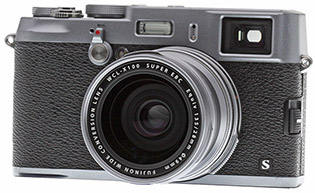
The Fujifilm WCL-X100 wide angle converter, designed to give a wider angle of view to the fixed lens X100 and X100S model cameras, has been available for a few years now. But for whatever reason we were never able to procure a sample model for review when it was first released.
We finally got one into our lab, and it comes on the heels of our review of the recently released TCL-X100, which provides an effective 1.4x magnification factor and transforms the camera from a fixed 35mm eq. focal length to the more portrait-friendly 50mm eq. range. Due to the popularity of that review on our site, we were excited to finally be getting our hands on its wide angle cousin, so let's dive right in.
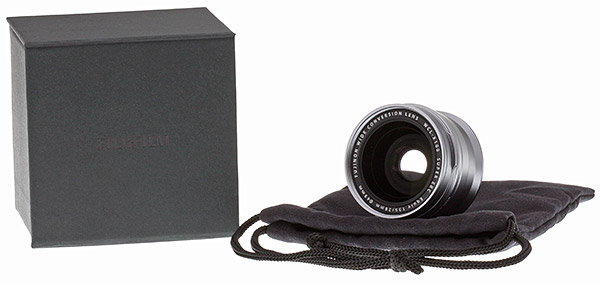
The WCL-X100 lends a magnification factor to the 23mm (35mm eq.) fixed lens of 0.8x, thereby providing an equivalent focal length of 28mm. This is certainly not as wide as the more common wide angle of 24mm, but does open up the available shooting field to some degree, and there are certainly times when the greater field of view is welcome.
Out of the box. Similar to the TCL-X100, the WCL-X100 feels solid and professional straight out of the nice padded box and cloth pouch it ships in. The box itself has a reassuring magnetic "click" when it closes, and again, the subtle yet elegant "Made in Japan" stenciling is also reassuring. Screwing the unit onto our X100S review sample felt satisfying and secure, giving the camera a more balanced look than the rather small 35mm equivalent fixed lens.
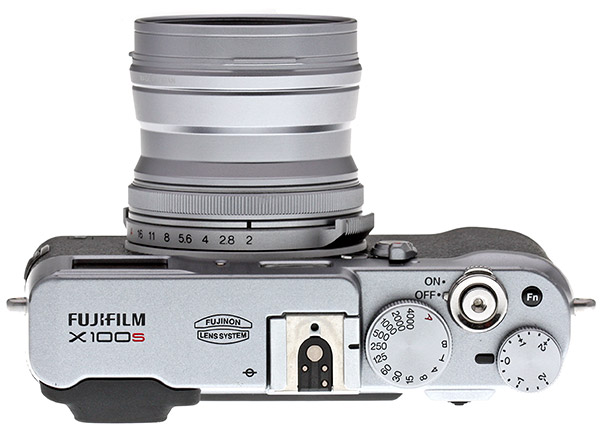
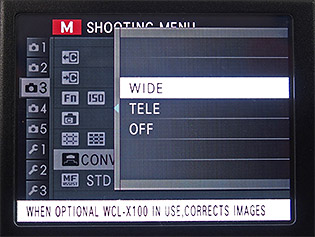
Power it up and let's shoot. Well, not quite, as there is one very important step required before you can start capturing wider angle images without some form of barrel distortion, and that's to make sure you go into menu folder #3, scroll down to the Conversion Lens setting, and switch it to "Wide". Since there is no mechanical connection between the WCL-X100 and the X100/S, you have to tell the camera when you've attached one of them, so it can correct for the distortion they produce.
As with its teleconverter cousin, Fuji states in its website product literature that the WCL-X100 "does not affect the minimum working distance in macro photography". I found with the TCL-X100 that I was not able to get as close, in effective range, for macro shooting. This was not a deal-breaker since the X100S fixed lens already does a strikingly good job in that department. With the WCL-X100, I encountered somewhat different and mixed results.
The X100S will show a green square and beep "in-focus" while at a closer effective range than the 35mm eq. fixed lens, yielding what appears on the LCD as better macro performance. But, in all cases once transferred to a computer monitor, the images were to some degree or other either out of focus or not quite as crisp as the fixed 35mm eq. lens. I spent several hours confirming this, and shot several different targets multiple times, and in varying light and settings, to make certain of the results. I even tried backing off just a bit, in order to give it a better chance, but to little avail. Interestingly, this confirmed why several close-ups of flowers I'd shot previously turned out a bit softer once transferred than I'd originally hoped for. The images are actually rather pleasing, and the softness not a deterrent to that subject matter, but if you're looking for crisp macro photography, you'll almost certainly want to stick with the original 35mm eq. fixed lens.
Fortunately, this is also not a deal breaker, as wide angle lens converters are not traditionally the go-to option for macro work, but it is something we wanted to make you aware of, since it's one of the first claims on Fuji's website for this converter.
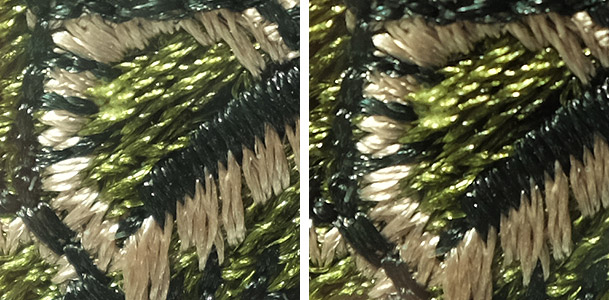
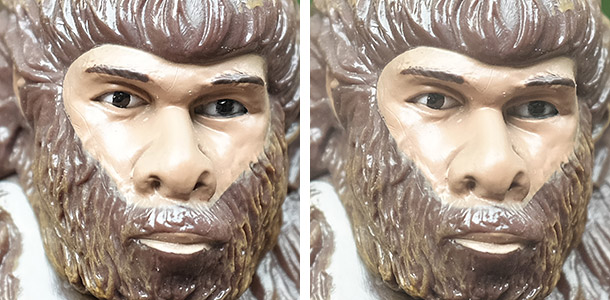
In both cases above, the original 35mm eq. fixed lens produces sharper and clearer macro images than does the WCL-X100, and these were the best two examples I was able to get.
[Crops above at 1:1]
Sharpness. Now that we've identified a bit of a struggle to achieve sharpness in the macro world, let's turn to the lab and more common wide angle shooting distances. I enlisted our senior lab technician Luke Smith to shoot our standard "VFA" target for analyzing lens sharpness in the center and out to the corners. Below are 1:1 crop results from the 35mm eq. fixed lens and the 28mm eq. WCL-X100 in the center and in the top left corner, for comparison. As you can see, at these more common shooting distances, the lens does a nice job with overall sharpness, especially in the center.
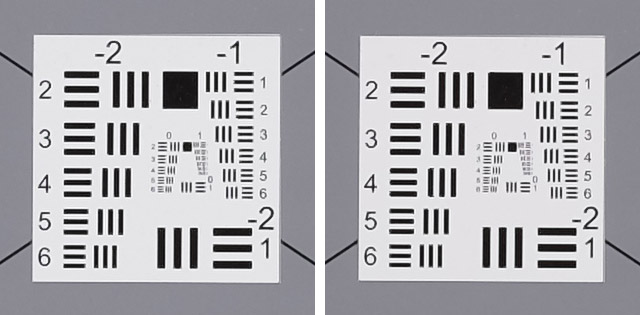
Center sharpness for the WCL-X100 is amazingly good.
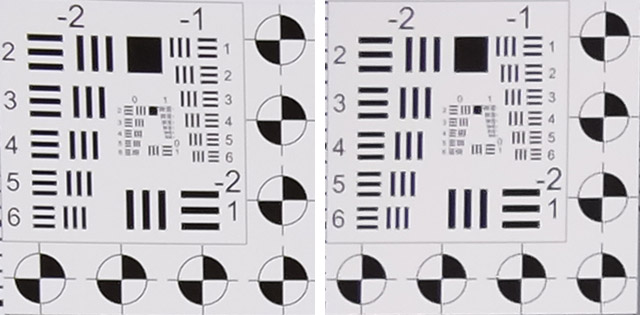
And corner sharpness compared to the 35mm eq. fixed lens is fairly good as well, though not perfect. Interestingly, there seems to be less distortion in the corners of the frame with the conversion lens (and the Conversion Lens menu option set to "Wide") than with just the camera's lens by itself.
For fans of the optical viewfinder (OVF) Luke discovered a few issues, the first being getting the AF frame area positioned correctly. There is a menu item called "AF Frame Correction" which is meant to adjust the frame box accordingly while using the OVF, and it does so when enabled, but it also creates quite a bit of distraction on the screen because the original frame box remains, as does the worst-case shift area, and then the new green box after a half-press. So while framing your image, you have three overlaid boxes right in the center of the image. [Note: the EVF does not need correction, nor the LCD.]
There is also an issue with correct framing of the entire image due to parallax. When the conversion lens setting is set to TELE or OFF, a white framing guide in the OVF shifts when you half-press the shutter, in order to show what you are actually now framing (countering the shift effects of parallax depending on your distance to the subject in focus). However, when switching to the WIDE setting there is no white framing box (only yellow framing corners) and no shift after a half-press. The real-world result is shown below.
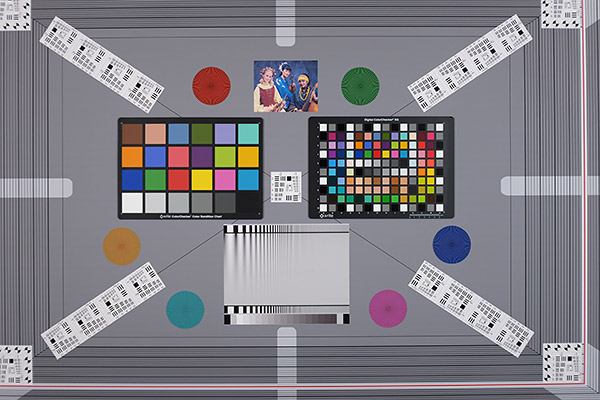
Again, this is certainly not a deal-breaker, just something for OVF fans to take note of.
A free fisheye lens when you purchase this converter? Let's get back to that menu setting regarding letting the camera know that the converter is attached. For you curious readers asking about the effects of forgetting to enable this setting, or for those rebellious readers who refuse to be told what to do (you know who you are) below are a few examples, both laboratory and real-world, to show you what to expect should you forget (or refuse!) to enable the "correct" setting.
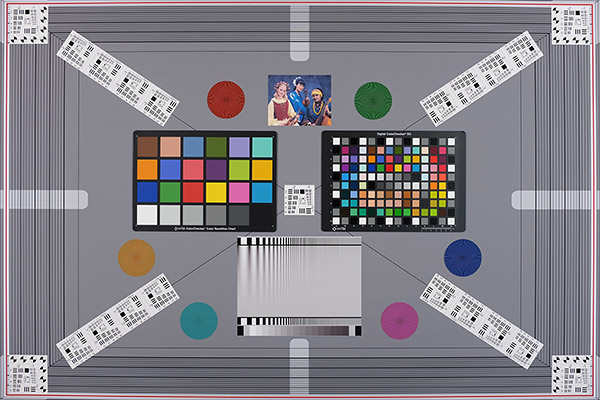
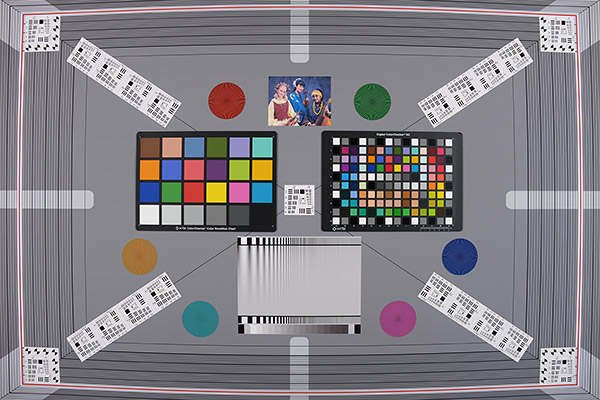
As you can see, there is obvious barrel distortion in the image when neglecting to correctly set the menu to WIDE. I can hear you mad scientist types out there, asking "what if you do neither, and instead enable the "TELE" option with the wide angle converter attached?" At the risk of the camera exploding, I tried all three in a local gym, and the results are below. These will provide a more real-world example of the effects you'll encounter, but also show an added bonus feature in going that mad scientist route by choice: a built-in (if modest) fish-eye effect.
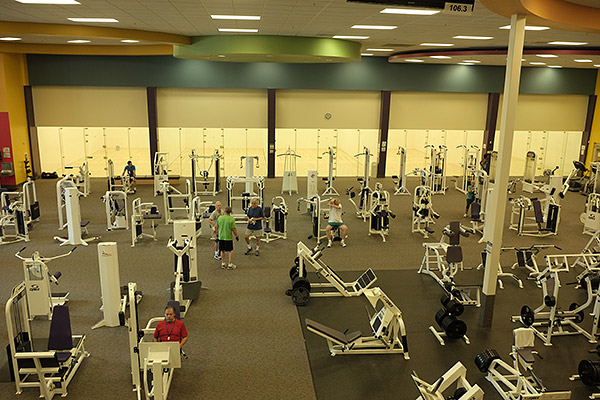
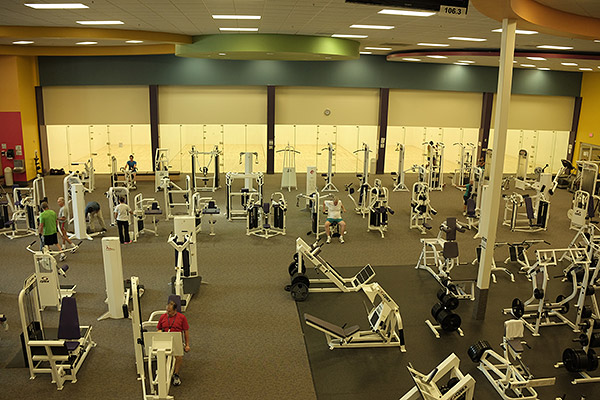
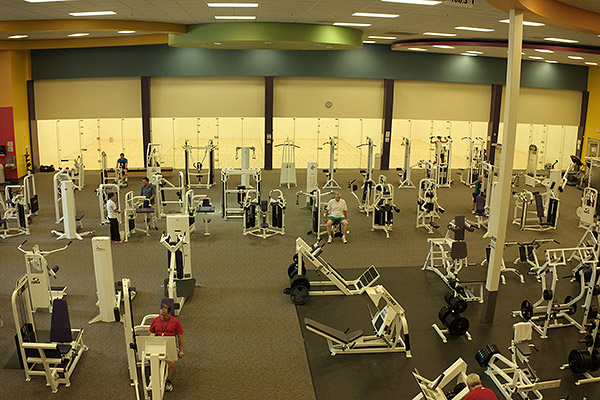
As you can see yet again by looking at the green beam near the top of the image, leaving the setting to OFF results in obvious barrel distortion, and choosing TELE even more so. Using the wrong setting doesn't get you all the way to a fisheye, but you may find it a useful creative effect.
Remember, you stubborn or forgetful users, that it's not Fuji's fault if you forget to enable the setting. I was both stubborn and forgetful at times throughout the testing of both X100S conversion lenses, but the experience taught me to be more careful and, there's really no way they could have gotten around this necessity, without making the lenses both enormous and much more expensive, or trading away other aspects of image quality.
Out of the lab and into the world. As stated in my TCL-X100 review, I found many of the gallery images on Fuji's site for both of these converters to be a bit otherworldly in nature. More so with their teleconverter images, but a few of their wide angle images are striking as well. Below are some samples I shot with the WCL-X100 to showcase some of its possibilities. These are all straight from the camera JPEGs, resized to fit this page but otherwise unaltered. You can view the full resolution images and access the RAW files for most images (and download them for your own non-commercial purposes) as well as view the EXIF data on our X100S gallery page (all images with "WCL" in the title were shot with this converter, and any images with "TCL" in the title were shot with the TCL-X100).
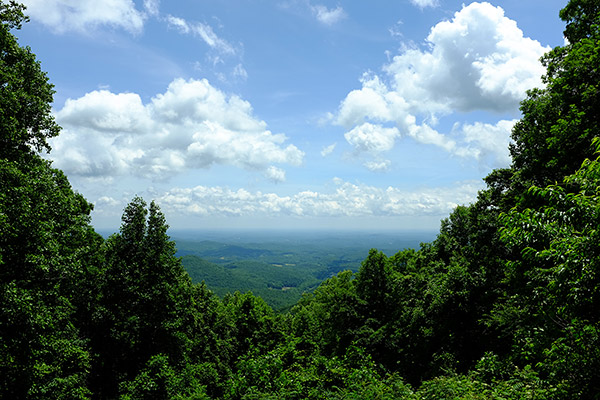


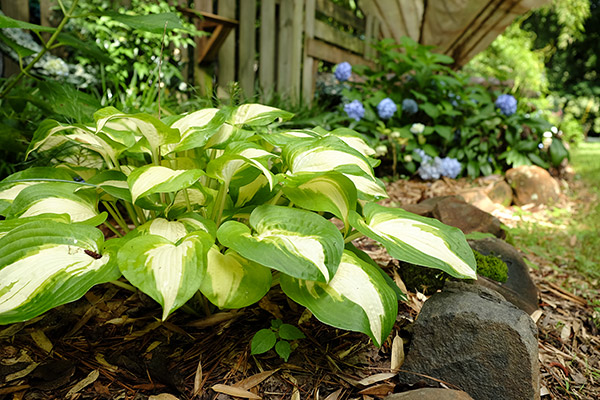
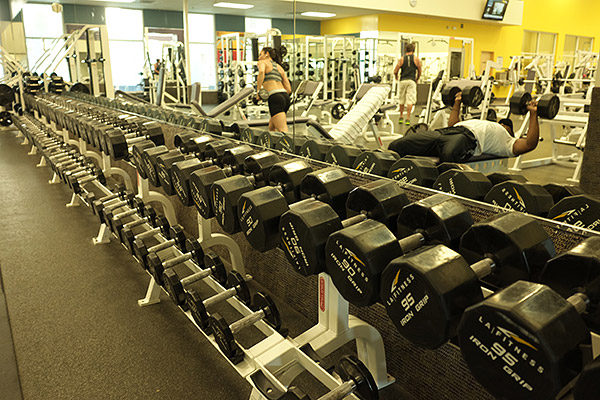

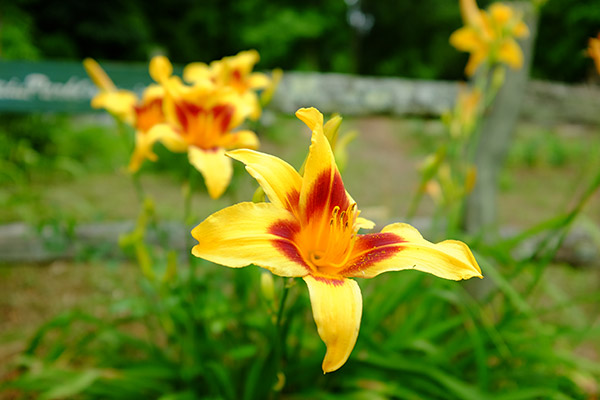
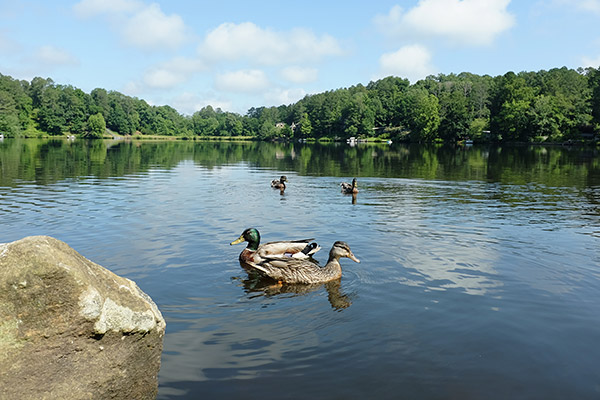
Conclusion. If I were an X100 or X100S shooter (or let me perhaps say not if, but once I can afford to become one) and had an extra $325 or so available, I'd very much consider adding the WCL-X100 to my arsenal. For my style, it wouldn't be an obvious, no-brainer choice like the newer TCL-X100 though. If it allowed for the more classical 24mm eq. it would be another slam-dunk for me, but at 28mm eq. range, not quite so much. That's just me, though, street shooters will undoubtedly find it a higher priority need.
For those of you who are enjoying your X100/S bodies and yearn from time to time for a bit more breathing room in your wide-angle shooting, this little guy will deliver that with aplomb. As long as you remember to enable the Conversion Lens setting and aren't too close to your subject matter, you'll be in great shape with the WCL-X100.
Ready to place an order for one? Use one of our trusted affiliates:
Amazon (silver or black), Adorama (silver or black) or B&H (silver or black).
[quick links: Fujifilm X100S review • Fujifilm TCL-X100 review • X100S Samples Gallery]


